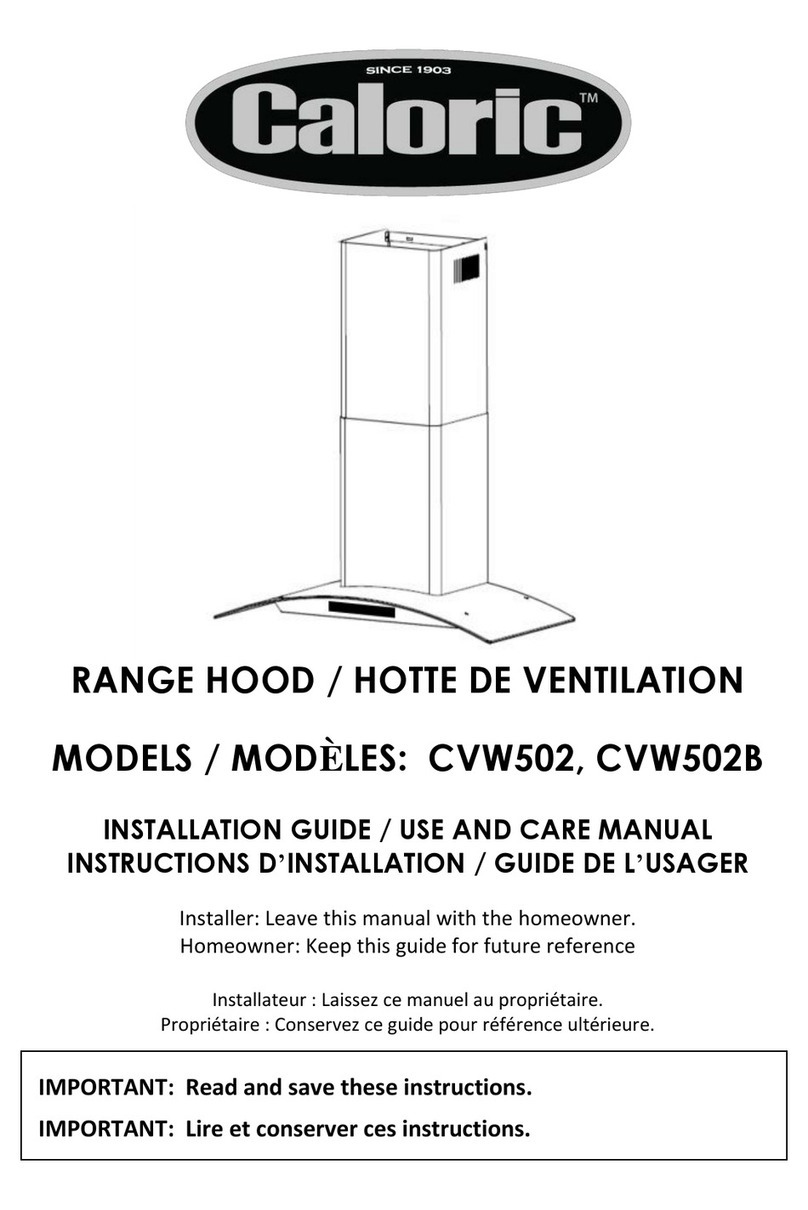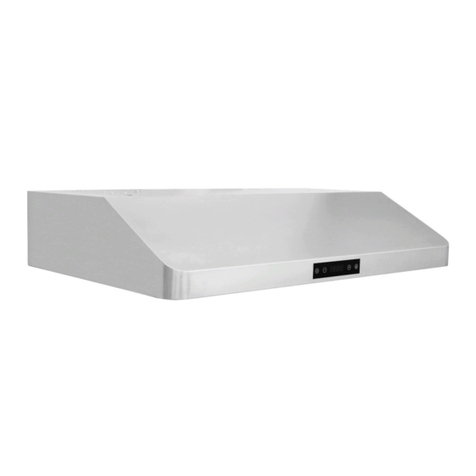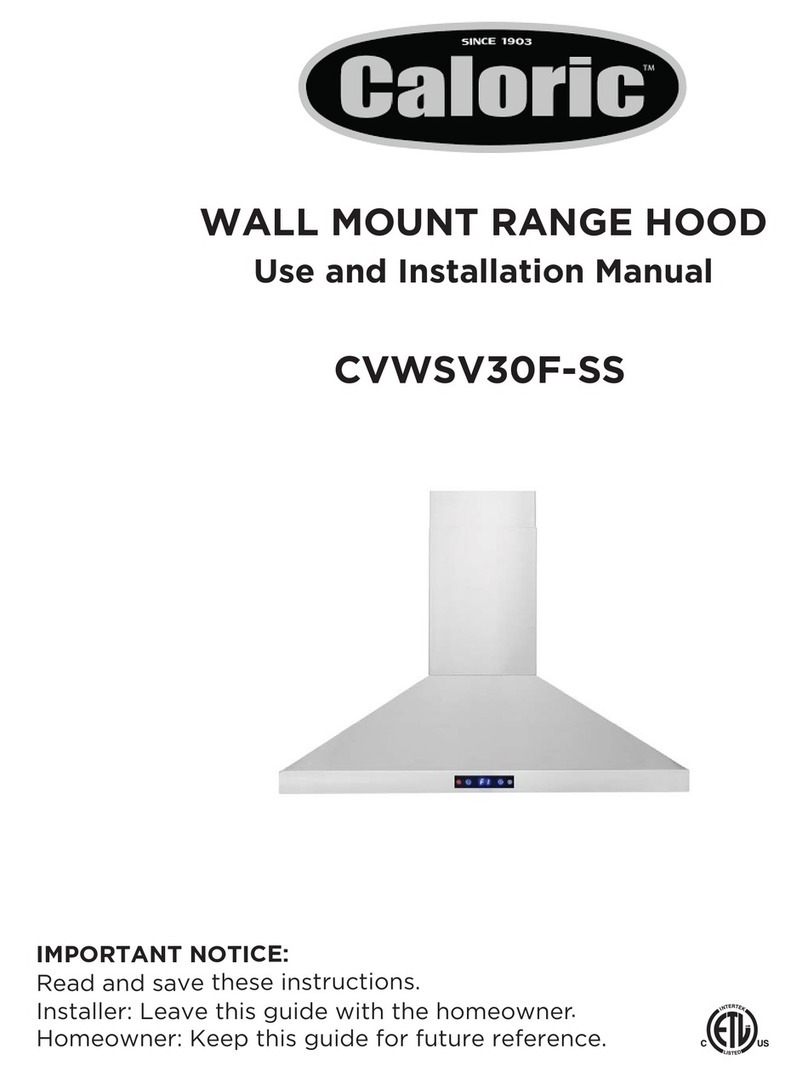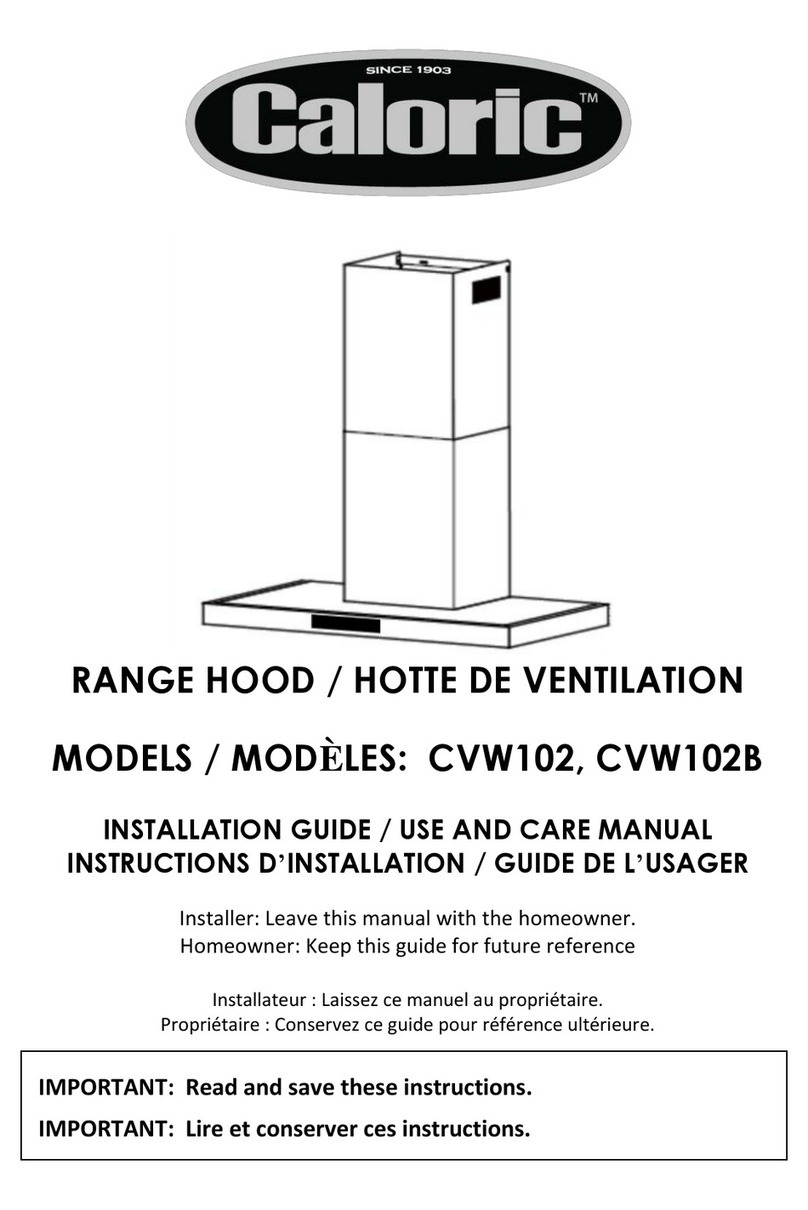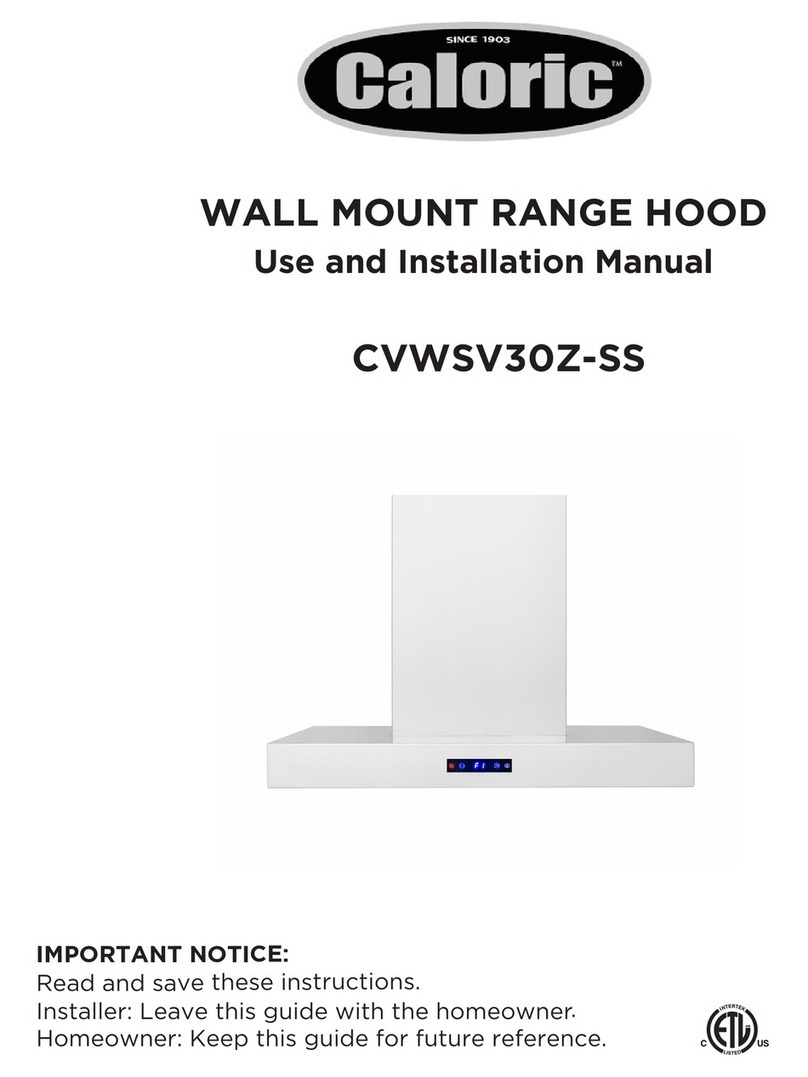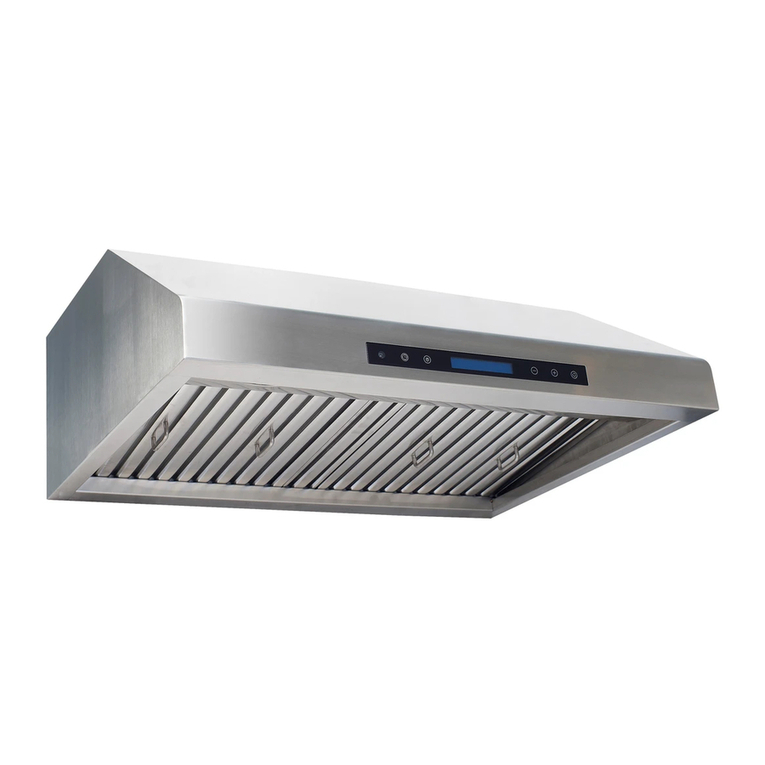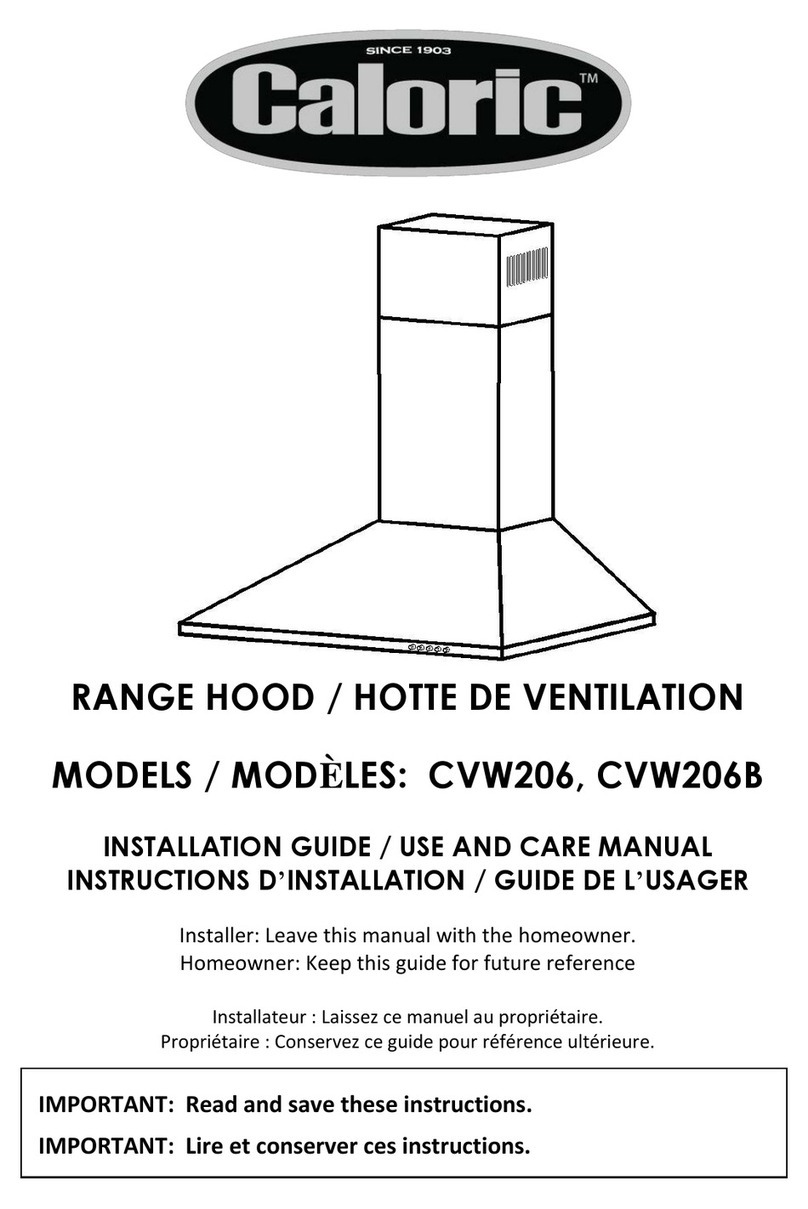
Important Safety Notice
READ ALL INSTRUCTIONS BEFORE INSTALLING AND OPERATING THIS APPLIANCE
Pg 1
This is the safety alert symbol. This symbol alerts you to potential hazards that can hurt you and
others. All safety messages will follow the safety alert symbol “ ” and the word “WARNING”.
The manufacturer and/or distributor/reseller declines all responsibility in the event of failure to observe the
instructions given here for installation, maintenance and suitable use of the product. The manufacturer and/
or distributor/reseller further declines all responsibility for injury due to negligence and the warranty
of the unit automatically expires due to improper maintenance. The manufacturer and/or
distributor/reseller will not be held responsible for any damages to personal property or real estate or any
bodily injuries whether caused directly or indirectly by the range hood.
•The installation in this manual is intended for qualified installers, service technicians or persons
with similar qualified background. Installation and electrical wiring must be done by qualified
professionals and in accordance with all applicable codes and standards, including fire-rated
construction.
•DO NOT attempt to install this appliance yourself. Damage or Injury could result from
installing the unit due to lack of appropriate electrical and technical background.
•Due to the size and weight of this range hood, at least two people are recommended for
installation to reduce the risk of fire, electric shock, or injury to persons.
•Range hood may have very sharp edges; wear protective gloves if it is necessary to remove any
parts for installing, cleaning or servicing.
•Ensure any nearby electrical service are OFF and stay OFF until the completion of installation
to reduce the risk of electrical shock, short-circuit, electrical spark which may cause injury or
damage. For general ventilating use only.
•DO NOT use to exhaust hazardous or explosive materials and vapors.
•In order to ensure the safe operation of fuel-burning heating equipment, it's air flow needs to
be to be considered for proper combustion. Follow the heating equipment manufacturer’s
guideline and safety standards such as those published by the National Fire Protection
Association (NFPA), and the American Society of Heating, Refrigeration and Air Conditioning
Engineers (ASHRAE), and the local code authorities.
•To reduce the risk of fire and to disperse air properly, make sure to vent air outside. Sufficient
household air flow is required for the proper combustion of fuel-burning heating equipment,
and the exhaustion of their gases.
Excessive Weight
Require three or more persons to
move and install this range hood.
Spinal or other bodily injuries
could occur if it is not followed.
Burn Hazard!
Light bulb may become extremely hot when turned ON. DO NOT touch bulb until
switched OFF and cooled. Touching hot bulbs could cause serious burns.
Severe Injury
Rotating fan can cause severe
injury. Stay clear of fan when
power is present.
Electrical Shock Hazard
Do not perform service on an electrically live
system. Disconnect the main electrical supply
before servicing this device. Touching
electrical connectors or other exposed
electrical circuitry inside this range hood when
they are energized could result in death,
serious bodily injury, or property damage.
Your safety and the safety of others is very important. We have provided many important safety
messages in this manual and on your appliance. Always read and obey all safety messages. All
safety messages will tell you what the potential hazard is, tell you how to reduce the chance of
injury, and tell you what can happen if the instructions are not followed.
